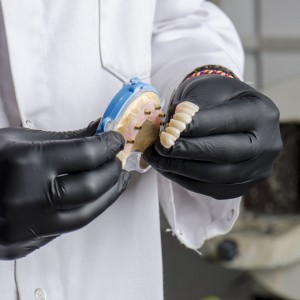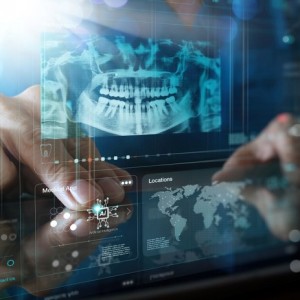
Using WhatsApp to dialogue with patients?
The use of instant messaging, and mainly WhatsApp, has allowed receiving prescriptions and referrals for visits to specialists and exams without having to go to the doctor's office. But how do doctors view this tool?
The Order of Physicians and Dentists of the Province of Florence tried to understand this topic by surveying its members. The questionnaire and data analysis were carried out by the DataLifeLab of the University of Florence and experts from the cooperative Retesviluppo.
Sample survey
A total of 1,541 professionals responded to the survey, of whom 814 were men and 727 women, with an average age of 55 years.
In terms of specialization, most of the professionals who responded are from dentistry (141), gynecology and obstetrics (78), pediatrics (71), anesthesia and resuscitation (60), psychiatry (59) and cardiology (58). Among the participants, 442 were civil servants, 561 self-employed, 259 general practitioners, 38 free-choice pediatricians, 74 pensioners, 65 trainees/specialists and 44 university students. 79.2% of physicians reported communicating with patients via mobile phone. More than 22% said they owned more than one smartphone and 28 professionals didn't have one. More than 31% use mobile exclusively for work, often pediatricians. Young people, more than others, manage to keep two smartphones separate in their daily lives.
Results of the study
According to the survey, only 0.6% of doctors communicate only verbally with patients. While email is only used by 6.6% of respondents, so it turns out to be an unprofitable solution.
WhatsApp is the most used communication app (by 84.3%). Traditional text messages are sent by 50.9% of doctors, while only 14.5% use Telegram or Messenger. The survey shows that WhatsApp is used to communicate with patients by 53.9% of doctors, to schedule appointments by 39.8%, to send prescriptions by 20.7%, to evaluate exams and give treatment advice to patients by 42%, and to exchange clinical information of patients with colleagues by 56.1%. Nearly 8% of physicians discovered applications during the COVID-19 pandemic.
On average, however, instant messaging is also invasive into the privacy and private sphere of the doctor. Surgeons, hematologists, endocrinologists, geriatricians, gynecologists, forensics, sports and occupational physicians, nephrologists, neurologists, pediatricians and psychiatrists are the ones who feel this invasion the most. The survey also reveals gaps in privacy knowledge: almost half of doctors (47.7%) have not attended a training course on data processing/consent in the last three years.
"For us self-employed dentists, all tools that allow us to communicate more easily with our patients are welcome," said Dr. Davis Cussotto, a dentist who also frequently collaborates in the new technologies section of Dentistry33 Italy.
"We have been using WhatsApp web in our practice for some time to remind patients of their appointments and the results are excellent," said Cussotto. "But we don't limit ourselves to that."
The dentist said he often uses WhatsApp with voice or video messages.
"Asking the patient how he is after an operation, giving advice on how to perform a treatment or cleaning a prosthetic device with the live voice 'of the consultation' (dentist, assistant, hygienist, whatever) reassures the patient, because the prosody of the voice (intonation, tone, pauses) generates emotions and involvement. The messaging application allows us to be in direct contact with the patient without being live. Nowadays both we and our patients are busy, through a voice or video message we can communicate as soon as we can, but also the patient can listen to us and hear us again in the case of therapeutic indications when it suits him. The phone call or video call for two is now reserved for selected cases," he said.
This article was originally published on Odontologia33.
 Related articles
Related articles
Prosthodontics 31 October 2025
Rapid Prototyping Technologies and their Applications in Prosthodontics, a Review of Literature
The early computer-aided design/computer-aided manufacturing (CAD/CAM) systems were relied exclusively on subtractive methods.
News 31 October 2025
Relu.ai, an AI scale-up that brings automatic design to dentistry, has now received CE certification (under the EU MDR) for its AI automatic implant planning solution.
Digital Dentistry 22 October 2025
Artificial intelligence in dentistry: Exploring emerging applications and future prospects
This narrative review aimed to explore the evolution and advancements of artificial intelligence technologies, highlighting their transformative impact on healthcare, education, and specific aspects...
Periodontology 10 October 2025
Continuous professional development (CPD) in Periodontology refers to the overall framework of opportunities that facilitate a life-long learning practice, driven by the learner-practitioner and...
Editorials 08 September 2025
UCSF Chancellor Sam Hawgood has reappointed Mike Reddy as Dean of the School of Dentistry from February 2025 until February 2030.
 Read more
Read more
Much like EMTs rushing to the scene after an accident, stem cells hurry to the site of a skull fracture to start mending the damage. A new finding has uncovered the signaling mechanism that triggers...
Products 05 November 2025
SimplyTest has launched a groundbreaking saliva-based test to detect high-risk strains of oral human papillomavirus (HPV), a major cause of oropharyngeal cancers.
News 05 November 2025
Perimetrics, Inc., a dental technology company pioneering quantitative diagnostics, announced today that the U.S. Food and Drug Administration (FDA) has granted clearance for the InnerView...
News 05 November 2025
On October 15, open enrollment for Medicare began nationwide. Hundreds of thousands of seniors in New Jersey will once again face the challenge of finding the right Medicare coverage, including the...
Digital Dentistry 04 November 2025
Digitalisation is an expanding field in dentistry and implementation of digital teaching methods in dental education is an essential part of modern education.















